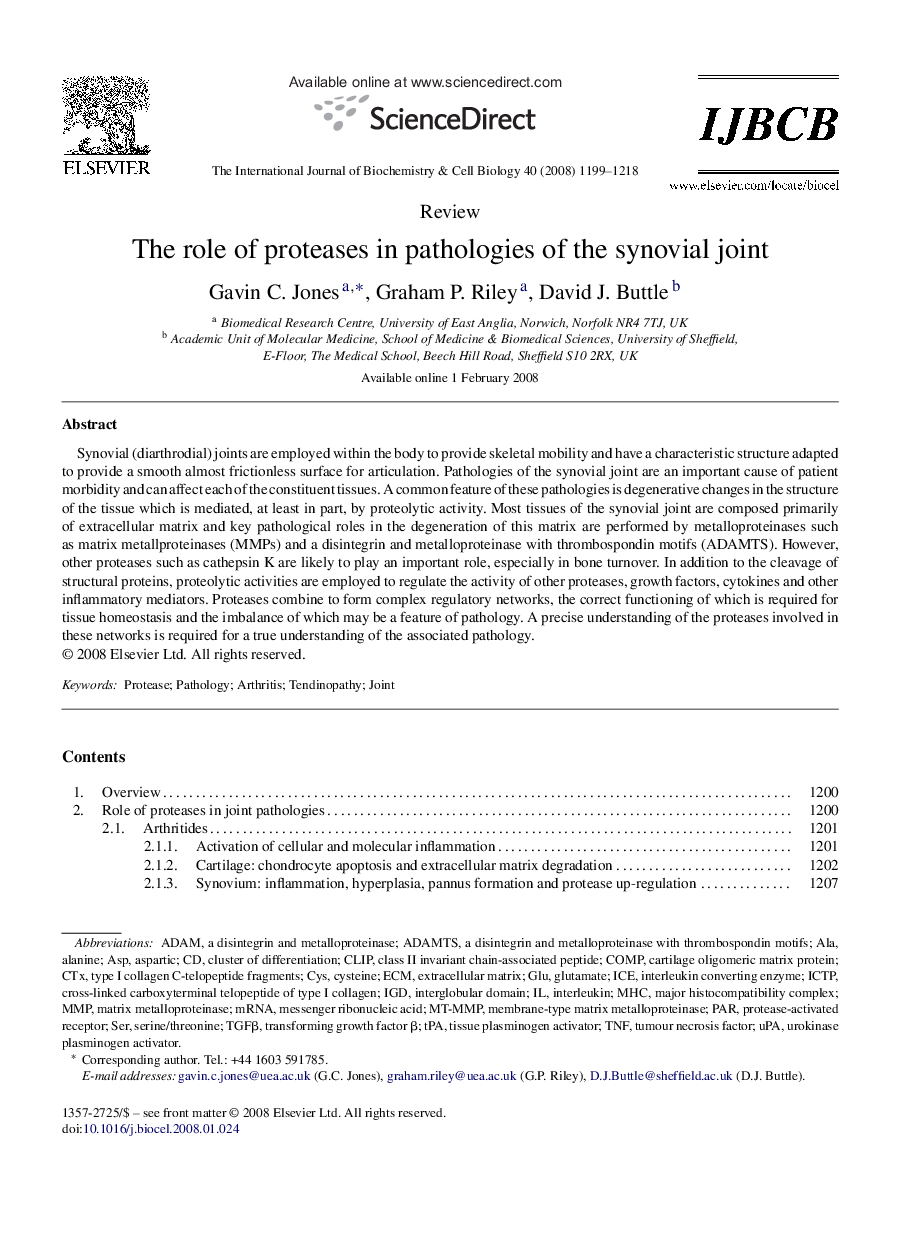| Article ID | Journal | Published Year | Pages | File Type |
|---|---|---|---|---|
| 1984955 | The International Journal of Biochemistry & Cell Biology | 2008 | 20 Pages |
Synovial (diarthrodial) joints are employed within the body to provide skeletal mobility and have a characteristic structure adapted to provide a smooth almost frictionless surface for articulation. Pathologies of the synovial joint are an important cause of patient morbidity and can affect each of the constituent tissues. A common feature of these pathologies is degenerative changes in the structure of the tissue which is mediated, at least in part, by proteolytic activity. Most tissues of the synovial joint are composed primarily of extracellular matrix and key pathological roles in the degeneration of this matrix are performed by metalloproteinases such as matrix metallproteinases (MMPs) and a disintegrin and metalloproteinase with thrombospondin motifs (ADAMTS). However, other proteases such as cathepsin K are likely to play an important role, especially in bone turnover. In addition to the cleavage of structural proteins, proteolytic activities are employed to regulate the activity of other proteases, growth factors, cytokines and other inflammatory mediators. Proteases combine to form complex regulatory networks, the correct functioning of which is required for tissue homeostasis and the imbalance of which may be a feature of pathology. A precise understanding of the proteases involved in these networks is required for a true understanding of the associated pathology.
